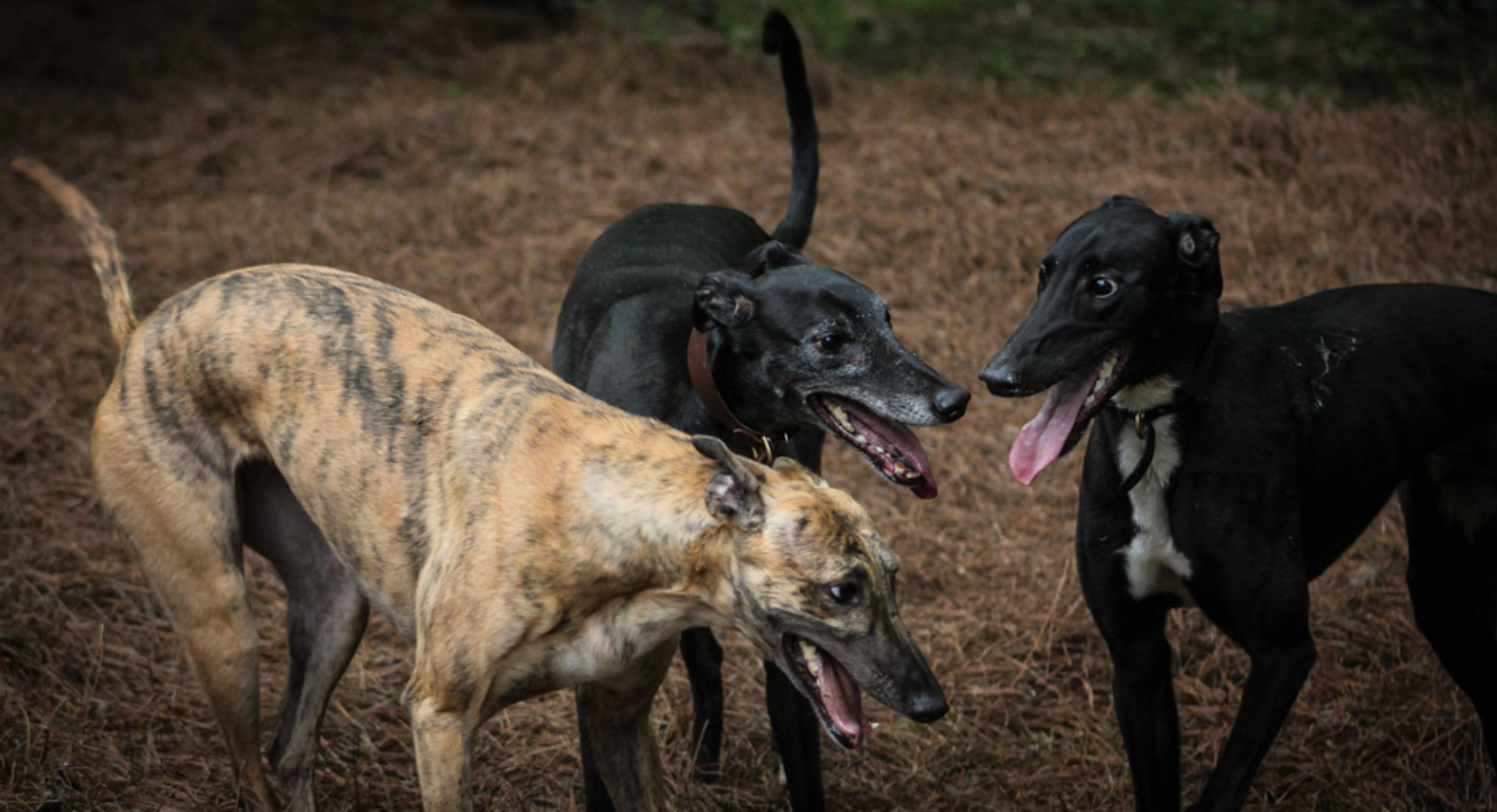Am I the only Greyhound owner who gets annoyed when asked if my Greyhound was rescued? It really gets under my skin and it seems to happen far too often. The other day we were buying dog food and I was asked if my Greyhound was “rescued.” I was in a particularly rotten mood and my husband elbowed me as to say “please do not unleash your bad mood on this poor kid.” I put my bad mood aside and replied, “No, they were not rescued and yes they are racing Greyhounds.” The kid looked perplexed but continued to bag our goods and not ask for more clarification.
I feel continually frustrated about the misinformation that makes its way into the mainstream. It seems like the anti-racing (AR) propaganda penetrates so deeply that it has affected many people, even people who own Greyhounds.
This past week I read two articles in two different papers in North America stating complete inaccuracies about Greyhound racing and the lives of racing Greyhounds. By no means am I saying there are no failings in the Greyhound racing industry and that it is perfect. However, I feel that the vast majority of people working in the Greyhound racing industry love Greyhounds and respect the breed for what it is: a functional, fast, exceptional hound.

If you are into Greyhound adoption and have not visited a track, you’re missing out. I am lucky to be a part of a Greyhound Adoption group that arranges yearly visits to racing kennels and tracks encouraging adopters to see what life was like for their Greyhound before adoption.
It is important to be thoughtful about our opinions, and knowing the details of both sides is important to understand the entirety of a subject. Unfortunately, it seems that most of the AR supporters cannot see past outdated reports of abuse and neglect to see the positive changes in Greyhound racing today. It oftentimes seems overwhelming to educate the general public and some Greyhound enthusiasts that racing Greyhounds are loved, well exercised, well fed and happy in their professional careers.
There are certain ideas created and propagated by the AR machine about retired racing Greyhounds that have invaded mainstream Greyhound adoption. One idea is that skittish dogs were abused throughout their professional careers. This idea is complete rubbish. First off, by now we all know that negative training is not successful. Why would someone spend thousands of dollars on a dog that could create revenue and abuse it, thus diminishing their chances of success? Complete insanity. Furthermore, dogs have different personalities just like us. I have raised a fair number of terrier pups and for the most part they are fearless dogs, but I have seen dogs be gun shy or timid with no external cause for them to demonstrate that behavior. Skittish Greyhounds are most likely that way do to nature not nurture.
Another idea that makes me nuts is the raw meat myth. Feeding raw meat is not a bad thing! Dogs are predators and they are made to eat raw meat. Now, let’s talk about non-human grade meat. The labeling of meat is not just based on the quality of the product but also the facility it is made it. Lots meat packing facilities have quality products but have not obtained certification from the USDA to mark their product as “human grade.” Most pet foods are not made for human consumption, as the regulations and certification for this labeling would be very expensive, increasing the cost of pet food. It’s just not a logical business move. Thus, the non-human grade meat myth should be a moot point from now on.
Opinions and facts are not the same; however, opinions create gut responses and bias. When dredging through the misinformation about Greyhound racing it is important to push our bias aside and get at the truth. I support Greyhound racing for many reasons and as I have seen and learned more about the industry my support grows. I hope that this article encourages you to reinvestigate your feelings about Greyhound racing immersing yourself in facts and not opinions.











